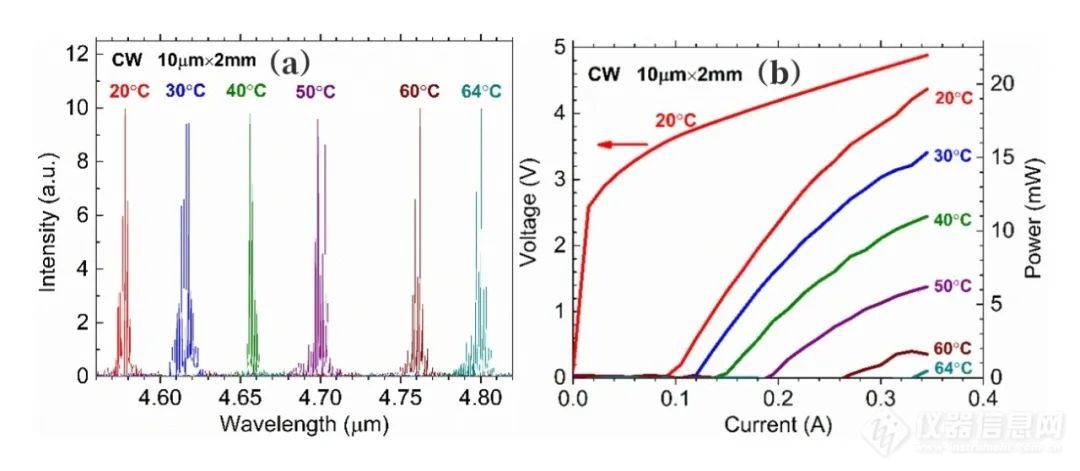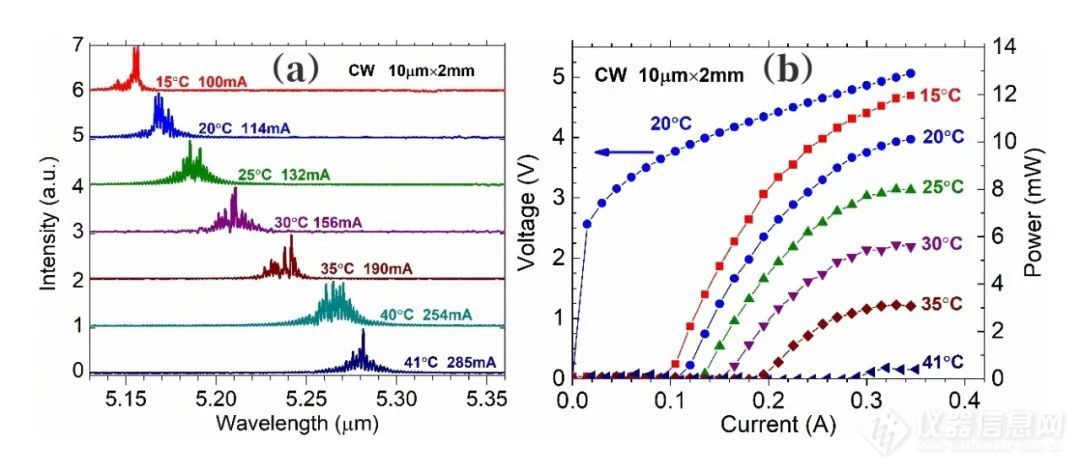some serious progress has been made .. wow
The Ruichuang team has made important progress in the research of mid-infrared inter-band cascade lasers..
Recently, Ruichuang Research Institute and Ruichuang Photonics team have made important progress in the research of mid-infrared interband cascade laser (ICL). Recently, Ruichuang Research Institute and Ruichuang Photonics team have made important progress in the research of mid-infrared interband cascade laser (ICL).
The relevant team has achieved high performance, continuous operation at room temperature, and multiple lasing wavelength bands. Inter-cascade laser series, combined with molecular beam epitaxy technology, grows inter-band cascade laser materials on InAs substrates, and the prepared narrow ridge devices have room temperature lasing wavelengths close to 4.6 μm and 5.2 μm. At present, most interband cascade lasers are grown on GaSb substrates, but the interband cascade laser reported by the Ruichuang team is grown on an InAs substrate. The waveguide cladding is composed of InAs/AlSb superlattice and highly doped InAs layer. constitute. Compared with common GaSb inter-baseband cascade lasers, InAs inter-baseband lasers have lower threshold current density at longer wavelengths (for example, longer than 4.5 μm).

For an interband cascade laser with a wavelength of 4.6μm, the room temperature pulse threshold current density of the wide ridge device is 292A/cm²; the continuous operating temperature of the narrow ridge device with a cavity length of 2mm and a ridge width of 10μm can reach 64°C, and the output power at room temperature is 20mW; At a similar wavelength, it is the highest continuous operating temperature reported so far. For an interband cascade laser with a wavelength of 5.2μm, the room temperature pulse threshold current density of the wide ridge device is 306A/cm²; the narrow ridge device with a cavity length of 2mm and a ridge width of 10μm has a maximum continuous operating temperature of 41°C and a room temperature output power of 10mW; where Threshold current densities are the lowest reported at similar wavelengths.

The interband cascade laser produces lasing based on energy band engineering and quantum mechanics. It has a high technical content and many difficulties in development. It is an important manifestation of the core technology of national nanometer and quantum devices. It is currently compared with the quantum cascade laser (QCL). ) is an important mid-infrared laser light source and has important application value and scientific significance in the fields of environmental monitoring, industrial control, medical diagnosis, and free space communications. The original concept of interband cascade lasers was first proposed by Professor Rui Q. Yang from the University of Oklahoma in the United States in 1994. Currently, the nearly lattice-matched InAs/GaSb/AlSb III-V material system is basically used.
To construct, most of the active areas are InAs/GaInSb type II quantum wells, whose capabilities can cover the wavelength range from mid-infrared to far-infrared. Interband cascade lasers combine the advantages of traditional semiconductor diode lasers and quantum cascade lasers. Compared with quantum cascade lasers that can also cover the mid-infrared band, they have lower threshold power density and threshold current density. This This extremely low power consumption advantage is very important in some applications that require portable and battery-powered devices. At present, the global inter-band cascade laser market is still dominated by foreign companies, and the country is still in the initial stage of industrial development. The two works reported in this article mark that Ruichuang Photonics has reached a high technical level in many aspects such as epitaxial design and device preparation of inter-band cascade lasers, and has become an enterprise that masters high-performance inter-band cascade laser technology. This work also laid a solid foundation for the subsequent development and mass production of single-mode tunable DFB inter-band cascade lasers.



